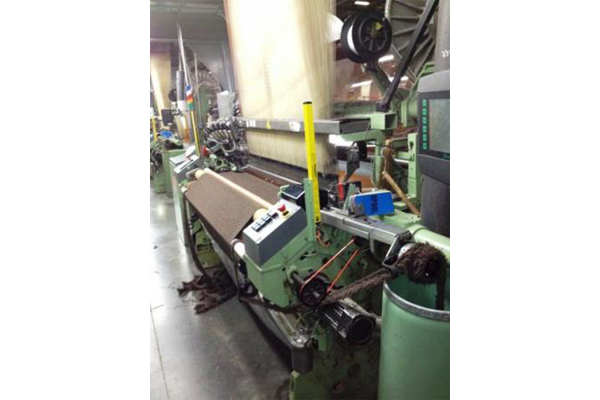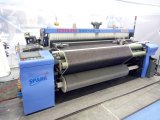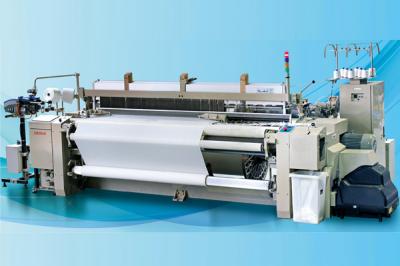Measures for Reducing Air Consumption of Jet Nozzle in Air-jet Loom Machine (1)
With the increasingly fierce competition in textile market, how to reduce weaving cost and energy consumption of air-jet loom manufacturers has become a new important issue. The energy consumption of air-jet loom machine is mainly air consumption, which can be roughly divided into three parts: energy consumption of air supply system, energy consumption of air use system and other auxiliary energy consumption, especially the former two consume most air.
Air-jet loom machine mainly consumes air, which accounts for about 72% of its energy consumption, while auxiliary nozzle accounts for more than 80% of its air consumption. To reduce the air consumption of air-jet looms, it is necessary to reduce the air consumption of auxiliary nozzles. It is necessary to take comprehensive and systematic measures to comprehensively consider the pressure of auxiliary nozzles, the spacing of auxiliary nozzles, the number of auxiliary nozzles controlled by solenoid valve, the configuration of gas storage tanks, the selection of the hole type of auxiliary nozzles, the adjustment of injection angle and injection direction angle. Among them, the reasonable determination of auxiliary nozzle pressure and the selection of energy-saving auxiliary nozzle are particularly significant for reducing gas consumption.
Therefore, in the absence of weft shrinkage, it is necessary to minimize the pressure of auxiliary nozzle, which can not only save air consumption, but also reduce weft breakage.
Air-jet loom machine mainly consumes air, which accounts for about 72% of its energy consumption, while auxiliary nozzle accounts for more than 80% of its air consumption. To reduce the air consumption of air-jet looms, it is necessary to reduce the air consumption of auxiliary nozzles. It is necessary to take comprehensive and systematic measures to comprehensively consider the pressure of auxiliary nozzles, the spacing of auxiliary nozzles, the number of auxiliary nozzles controlled by solenoid valve, the configuration of gas storage tanks, the selection of the hole type of auxiliary nozzles, the adjustment of injection angle and injection direction angle. Among them, the reasonable determination of auxiliary nozzle pressure and the selection of energy-saving auxiliary nozzle are particularly significant for reducing gas consumption.
1. Minimize the pressure of auxiliary nozzle
Practice shows that the flow rate of the whole machine is related to the pressure of the main nozzle and the pressure of the auxiliary nozzle as follows: When the pressure of the main nozzle is constant, the flow rate of the auxiliary nozzle increases by 7.06 cubic meters per hour on average when the pressure of the auxiliary nozzle increases by 0.1 MPa. When the main nozzle pressure increases by 0.1 MPa, the flow rate of the whole machine increases by 1.3 cubic meters per hour on average, which is only 18.4% of the flow rate increased by 0.1 MPa of the auxiliary nozzle pressure. With the increase of the main nozzle pressure by 0.05 MPa, the weft arrival angle can be reduced by 4.43 degrees on average. That is to say, if the main nozzle pressure is increased by 0.1 MPa, the weft arrival angle can be reduced by 8.86 degrees on average, and if the auxiliary nozzle pressure is increased by 0.1 MPa, the weft arrival angle can only be reduced by 2.5 degrees on average. Therefore, in a certain range of main and auxiliary nozzle pressure, increasing the pressure of auxiliary nozzle requires a lot of increase in gas consumption. But it has little effect on reducing the weft arrival angle and increasing the weft flying speed.Therefore, in the absence of weft shrinkage, it is necessary to minimize the pressure of auxiliary nozzle, which can not only save air consumption, but also reduce weft breakage.

 English
English  한국어
한국어  português
português  العربية
العربية  tiếng việt
tiếng việt  ไทย
ไทย  Malay
Malay  हिंदी
हिंदी  Indonesia
Indonesia  বাঙালি
বাঙালি  اردو
اردو 


